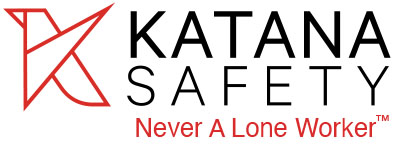Many home health and social service organizations think they have a strong safety policy in place for their lone workers. But in reality, critical blind spots can leave employees vulnerable and put the organization at risk legally, financially, and reputedly.
1. No Real-Time Emergency Escalation
The Gap: Relying solely on delayed communication methods like voicemail, call-ins, or check-in texts.
The Risk: If a nurse is actively in danger (e.g., in a hostile environment or medical emergency), waiting minutes for someone to notice a missed check-in can be too late.
The Solution
Provide workers with real-time safety tools (e.g., wearables or app-based alarms) that instantly alert a response team or manager, ideally with location tracking and audio access.
2. Infrequent or Incomplete Risk Assessments
The gap: Not tailoring safety protocols to the specific risks of each visit or client.
The risk: Workers may enter unknown or unsafe environments without proper preparation or backup.
The Solution
Implement a pre-visit dynamic risk assessment checklist covering:
-
Known behavioral concerns
-
History of incidents
-
Neighborhood crime trends
3. One-Size-Fits-All Safety Training
The gap: Annual, generic safety training that doesn’t reflect actual field conditions.
The risk: Workers don’t retain information or know how to apply it under stress.
The Solution
-
Use micro-learning modules (short, scenario-based videos)
-
Tailor sessions by role or geography
-
Incorporate interactive drills and group discussions
4. No Night or Weekend Safety Coverage
The gap: Assuming regular business hours apply to lone worker safety.
The risk: Most safety incidents occur during off-hours when there’s no one on call.
The Solution
-
Set up a 24/7 response protocol (internal or outsourced)
-
Rotate on-call supervisors
-
Use automated check-in systems with escalation triggers
5. No Written Escalation Protocol for Supervisors
The gap: Managers aren’t trained or prepared for how to respond to various safety alerts or red flags.
The risk: Even with a panic button or app, confusion or delay at the management level can render it ineffective.
The Solution
Create a step-by-step escalation guide:
-
Who responds first
-
How to verify the situation
-
When to call emergency services
-
What documentation to collect
6. No Culture or Process for Reporting Field Violence
The gap: Workers are unsure how, or if, they should report threats, abuse, or near misses.
The risk: Incidents go unreported, trends stay hidden, and staff morale suffers.
The Solution
-
Make reporting easy: mobile-friendly forms, anonymous options
-
Build trust: regularly communicate that reports will be taken seriously
-
Normalize it: discuss real incidents in team huddles (anonymized)
-
Close the loop: follow up on reports so employees see that action is taken
Every good safety plan requires a layered approach, as well as buy-in from both leadership and employees. When safety policies are viewed as a burden, gaps will continue to form and incidents will continue to occur.
KATANA Safety streamlines the emergency response process, protecting lone workers around the clock and offering managers insights to plan and respond to incidents promptly.
Download our Lone Worker Safety Guide Checklist to review your organization’s plan today.
